Beef Kare-Kare Recipe
Beef Kare-Kare is a version of kare-kare or peanut stew that makes use of beef chuck, instead of the traditional oxtail. It is as good as our other versions of kare kare. It was perfect with some spicy shrimp paste. The vegetables used in this recipe were blanched so that you can have the option to…
This post may contain affiliate links. Please read our disclosure policy.
Beef Kare-Kare is a version of kare-kare or peanut stew that makes use of beef chuck, instead of the traditional oxtail. It is as good as our other versions of kare kare. It was perfect with some spicy shrimp paste. The vegetables used in this recipe were blanched so that you can have the option to serve it separately from the stew. It is also a good idea if you plan to bring this dish with you on a picnic or a potluck event because the dish can be plated nicely.
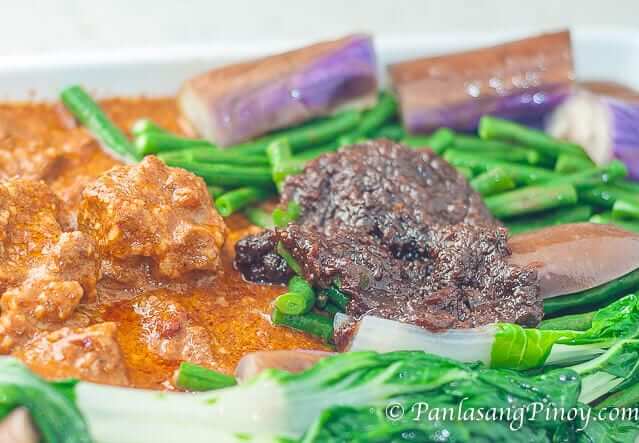
There are two things that I want to talk about regarding beef kare-kare: first are the peanuts. I used roasted peanuts that were processed using a regular food processor. I usually do this if I want the peanuts to be processed quickly. Doing this method will save you time, but the sauce of your kare-kare will have a grainy texture. The taste remains the same – still delicious. As I have mentioned in the video (see below), you can use peanut butter or you can manually pound the peanuts using a mortar and pestle tool (also known as almires) until it becomes almost powder-like.
The annatto powder is my next topic. It is also known as “atsuete” powder. I am using this ingredient to provide reddish color to the dish. This ingredient does not affect the taste of kare-kare. This means that you can still make a delicious peanut stew even without it. However, the color will not be as bright as this one. The overall color of your stew will depend on the amount of annatto powder that you will use. I used over 2 tablespoons of annatto powder, so it turned red (which made it look like mechado). You may use less annatto powder to make it less reddish. It all depends on your preference.
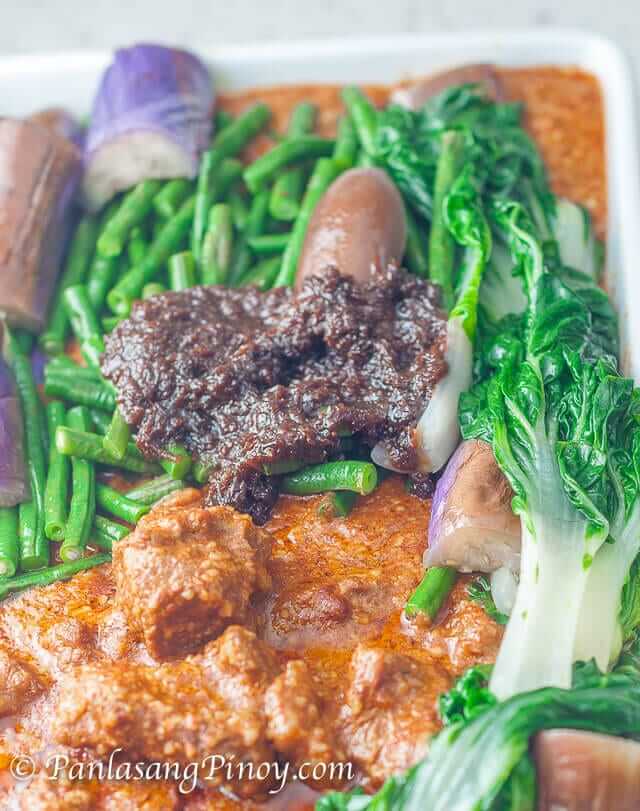
Water can be used as an alternative for beef broth, but I suggest that you add a piece of beef bouillon or beef cube.
Try this Beef Kare-Kare recipe. Ask me questions using the comments box below.
Watch this Video on How to Cook Beef Kare-Kare

Did you make this? If you snap a photo, please be sure tag us on Instagram at @panlasangpinoy or hashtag #panlasangpinoy so we can see your creations!

Beef Kare-Kare Recipe
Ingredients
- 2 lbs. beef chuck sliced into cubes
- 1 bunch string beans also known as snake beans, cut into 2 inch length
- 1 bundles bok choy lower end tip cut-off
- 1 large Chinese eggplant sliced
- 1 1/2 cup ground roasted peanuts
- 1 to 2 tablespoons annatto powder
- 2 tablespoons glutinous rice powder
- 1 large yellow onion
- 2 teaspoons minced garlic
- 4 tablespoons cooking oil
- 2 to 3 tablespoons fish sauce
- 4 cups beef broth
- 1/8 teaspoon ground black pepper
- ½ cup water
Instructions
- Heat the oil. Sauté the onion and add the garlic. Continue to sauté until the onion gets soft.
- Sprinkle some ground black pepper. Stir. Add the beef and cook until the color turns light brown.
- Put the ground peanuts in with the beef. Stir and cook for 2 minutes.
- Pour the beef broth in the pan. Let boil. Cover and simmer until the beef gets tender (around 60 to 90 minutes.). You can add water or beef broth if needed.
- Meanwhile, prepare to blanch the string beans, eggplant, and bok choy. Boil 4 cups of water in a pot. Put the vegetables in boiling water by batches. Boil the string beans for 2 minutes. Remove from boiling water and immediately put in a bowl with cold water and ice. Remove from the bowl with cold water and put in a clean plate. Do the same steps for the remaining vegetables.
- Once the beef gets tender. Add the fish sauce and the mixture of annatto powder, ½ cup water, and glutinous rice flour. Stir. Continue to cook until the texture of the sauce thickens (3 to 5 minutes in medium heat).
- Transfer to a serving bowl. Arrange the blanched vegetables on the side and top with shrimp paste (bagoong alamang).
- Serve with warm rice. Share and enjoy!
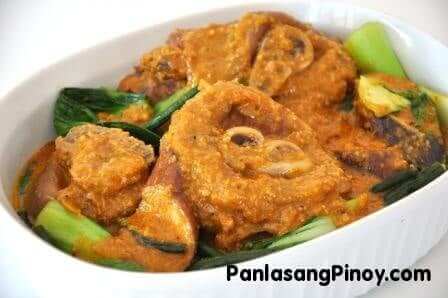
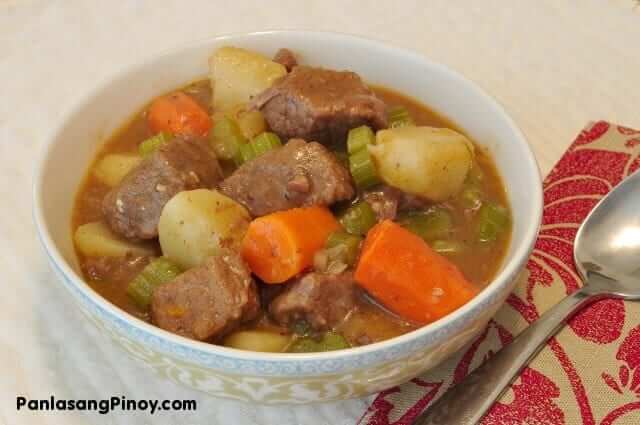
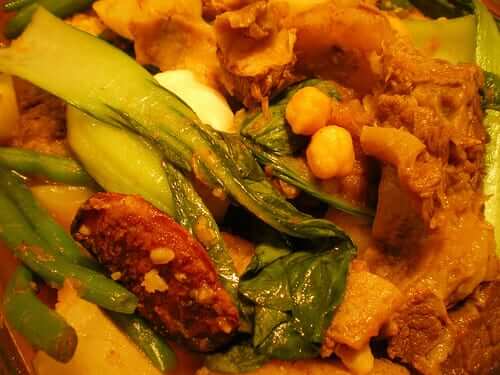
Dominica says
Thanks for all the recipe’s this help me in my cooking for the family
Vanjo Merano says
You are welcome, Dominica. Happy cooking!
Ed says
I don’t have rice flour. Is there a substitute?
Vanjo Merano says
You can simply dilute 1/2 teaspoon of cornstarch in 3 tablespoons water. Add more cornstarch if you want the sauce thicker.
Marie Pagkatipunan says
I want to use pistachios instead of peanut how am I going to do that?
SheAlpha says
Hi, instead of using ground nuts, can I just use the normal Peanut butter? And if yes, in what amount? Thank you!
Gaby says
Hello there! My name is Gaby and I am a high school student. I would like to ask you for your permission to use your recipe in my school project. Thank you! 🙂
Vanjo Merano says
Hi Gaby. How do you intend to present the recipe?
Of course you may, I was just curious 🙂